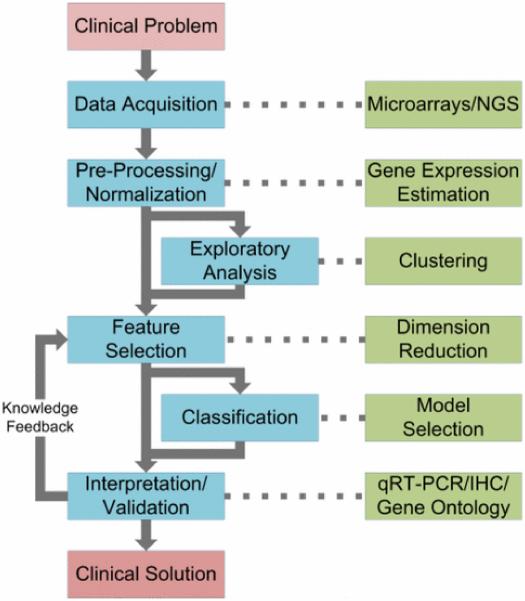Fig. 1.
Genomic data analysis pipeline. Beginning with a clinical problem, the aim of the pipeline is to find a clinical solution. This is achieved by identifying biomarkers that can uncover the underlying biological mechanisms of disease or that can predict disease presence or treatment outcome. After data acquisition, analytical steps in the pipeline include 1) preprocessing and normalization, 2) exploratory analysis, 3) feature selection, 4) classification, and 5) interpretation and validation. Exploratory analysis is optional, but can be an informative step prior to feature selection. Classification optionally follows feature selection if the target clinical solution is of a diagnostic or prognostic nature.

